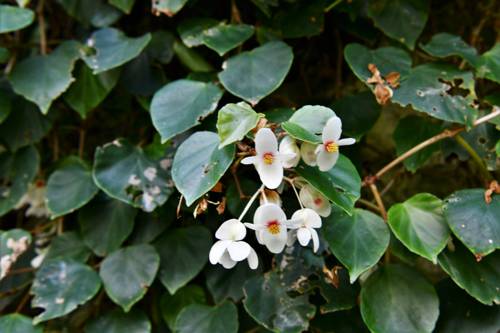
FAQ About Indoor Plant Therapeutic Gardens

What is a therapeutic indoor garden?
A therapeutic indoor garden is a specially designed space with plants that aims to promote mental and emotional well-being. These gardens are often created with the intent of providing a calming and healing environment that can reduce stress, improve mood, and enhance overall health. The design typically involves selecting plants known for their soothing properties and arranging them to create an inviting and peaceful atmosphere.

How do indoor plants enhance mental well-being?
Indoor plants can enhance mental well-being through various means. They are known to improve air quality by absorbing toxins and increasing oxygen levels, which can lead to better concentration and mood. Additionally, the act of caring for plants can be therapeutic and stress-relieving. The presence of greenery indoors also helps in reducing feelings of anxiety and depression, providing a sense of connection with nature even within an indoor setting.

Which plants are best suited for a therapeutic indoor garden?
Certain plants are known for their therapeutic benefits and are ideal for indoor gardens. These include lavender, known for its calming scent; aloe vera, recognized for its air purifying qualities; spider plants, which are excellent air purifiers; and peace lilies, which can enhance humidity and improve air quality. Selecting plants based on the specific mental and physical benefits they offer can help in creating a more tailored therapeutic garden.

What are the key elements of designing a therapeutic indoor garden?
Designing a therapeutic indoor garden involves several key elements: plant selection based on aesthetic and therapeutic properties, arrangement that maximizes exposure to natural light, and inclusion of sensory elements such as water features or aromatic plants to engage the senses. Additionally, ensuring easy access and space for interaction with plants can enhance the therapeutic effects. Choosing containers that complement the decor and arranging plants at varying heights and textures also play a role in creating a peaceful and harmonious space.

Can therapeutic indoor gardens be beneficial for people with allergies?
While therapeutic indoor gardens are generally beneficial, individuals with allergies should consider specific plant choices carefully. Some plants, such as orchids or spider plants, are less likely to trigger allergic reactions. However, plants with high pollen release or strong fragrances should be avoided. Additionally, keeping plants clean and free of dust can help minimize allergens. Proper ventilation and humidity control can also mitigate allergic reactions.

How can someone without gardening experience start an indoor therapeutic garden?
Starting an indoor therapeutic garden without prior gardening experience is entirely feasible. Begin with low-maintenance plants, such as succulents, snake plants, or peace lilies, which require minimal care and are resilient. Educate yourself using online resources, videos, or books focused on indoor gardening and always start with manageable quantities of plants. Joining local or online plant communities can also offer support and tips from experienced gardeners.

What are some common mistakes to avoid when creating a therapeutic indoor garden?
Common mistakes include over-watering or under-watering plants, choosing plants inappropriate for the light availability in the room, and neglecting necessary maintenance like dusting leaves or checking for pests. Another mistake is overcrowding plants, which can hinder airflow and growth. It's important to research each plant's specific care requirements and gradually introduce changes to the garden to monitor the plants' responses.

How often should plants in a therapeutic indoor garden be watered?
The watering frequency for plants in a therapeutic indoor garden varies depending on the plant type, climate, and season. Generally, most indoor plants benefit from a weekly watering routine, but some may require more or less. Checking the soil moisture level before watering is essential; the top inch of soil should be dry in most cases before the next watering. Using pots with drainage holes can prevent overwatering, which is a common issue in indoor gardening.

Can indoor therapeutic gardens help in improving air quality?
Yes, indoor therapeutic gardens can significantly enhance air quality. Many plants, such as peace lilies, snake plants, and bamboo palms, are effective at filtering toxins from the air and increasing humidity levels, which contributes to cleaner and more breathable indoor environments. The process of photosynthesis further increases oxygen levels indoors, which can improve cognitive function and well-being.

Are there specific design styles for therapeutic indoor gardens?
Design styles for therapeutic indoor gardens can vary widely. Popular styles include the zen garden, which employs minimalist, harmonious layouts with rocks and gravel; the tropical style, characterized by lush greenery and vibrant colors; and the modern style, which uses sleek lines and monochromatic color schemes. The choice of style depends on personal preference and the desired atmosphere, but all aim for a calming and restorative environment.

How do light conditions affect an indoor therapeutic garden?
Light is crucial for the health of an indoor therapeutic garden. Most plants require a certain amount of light to photosynthesize and thrive. Insufficient light can lead to weak growth, while too much light can scorch leaves. It's important to understand the light needs of each plant: some may thrive in low-light conditions, while others require direct sunlight. Utilizing grow lights can supplement natural light when necessary.

What role does color play in a therapeutic indoor garden?
Color plays a significant role in the design of a therapeutic indoor garden, influencing mood and atmosphere. Green, the predominant color in plants, is associated with calmness and relaxation. Adding plants with colorful blooms, such as orchids or bromeliads, can stimulate emotions and uplift spirits. The choice of pot colors and surrounding decor can also complement the plants and contribute to the garden's therapeutic appeal.

Can a therapeutic indoor garden include non-plant elements?
Yes, therapeutic indoor gardens often incorporate non-plant elements to enhance their calming effects. Water features like small fountains can provide soothing sounds and increased humidity. Stones, sculptures, or decorative gravel can add texture and interest. These elements help create a holistic healing environment that engages multiple senses, leading to a more immersive and therapeutic experience.

What maintenance is required for a therapeutic indoor garden?
Maintenance of a therapeutic indoor garden involves regular tasks such as watering, pruning, and repotting plants as they grow. It's also important to clean leaves to prevent dust accumulation, which can affect photosynthesis. Monitoring and controlling pests, providing adequate light, and ensuring proper humidity levels are crucial for plant health. Regularly assessing plants for signs of stress or disease can prevent issues from escalating.

How does a therapeutic indoor garden differ from a regular indoor garden?
While a regular indoor garden focuses primarily on growing plants for aesthetic or practical purposes, such as herbs for cooking, a therapeutic indoor garden emphasizes mental and emotional well-being. This involves careful plant selection and design choices tailored to create a therapeutic atmosphere. Aspects like plant aroma, texture, and placement are all considered to maximize the garden's healing potential.

Is it possible to create a therapeutic indoor garden in a small space?
Yes, it is entirely possible to create a therapeutic indoor garden in a small space by employing vertical gardening techniques or using hanging planters to save floor space. Utilizing window sills or shelves can also help. Selecting compact or trailing plants and arranging them thoughtfully can make the most of limited space while still providing the benefits of a therapeutic garden.

How can technology enhance a therapeutic indoor garden?
Technology can greatly enhance a therapeutic indoor garden by providing tools such as smart plant sensors, which monitor soil moisture and light levels, or automated watering systems to ensure consistent care. Apps can offer plant care tips and reminders. Additionally, using LED grow lights can ensure plants get the necessary light even in areas with insufficient natural sunlight.

Can therapeutic indoor gardens be integrated into workplaces?
Integrating therapeutic indoor gardens in workplaces can lead to increased employee well-being and productivity. These gardens can be used in break rooms, common areas, or even on individual desks. They serve as a refreshing visual break and help reduce stress levels. The presence of plants can improve air quality and foster a more pleasant and motivating work environment.

What are some challenges of maintaining a therapeutic indoor garden?
Challenges in maintaining a therapeutic indoor garden include inconsistent light conditions, fluctuating indoor temperatures, and pest infestations. Over or under-watering due to varying needs of different plants can also be problematic. Additionally, limited space might constrain plant growth. Proactively addressing these challenges through proper planning and regular monitoring is essential to sustain a healthy and thriving garden.
